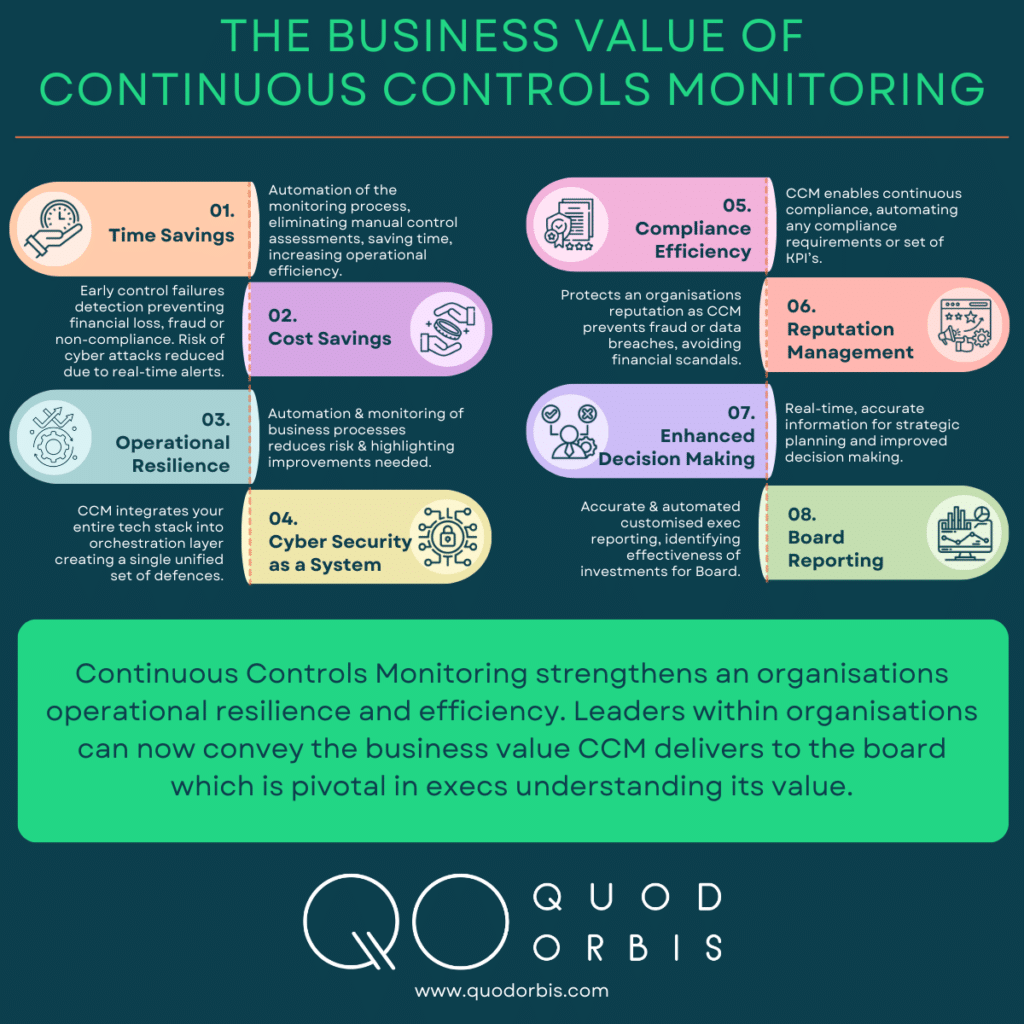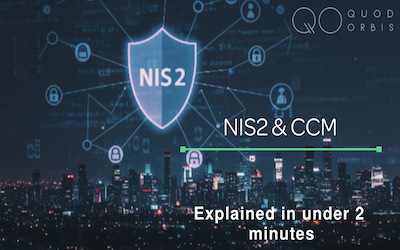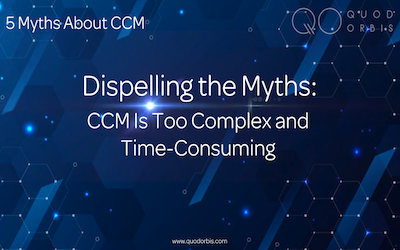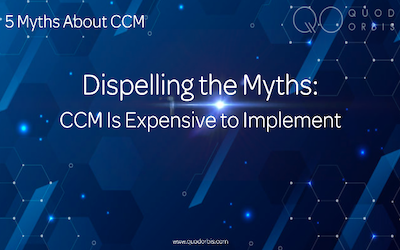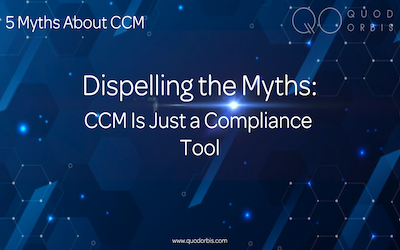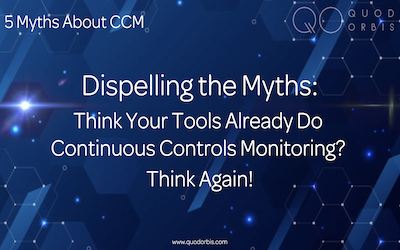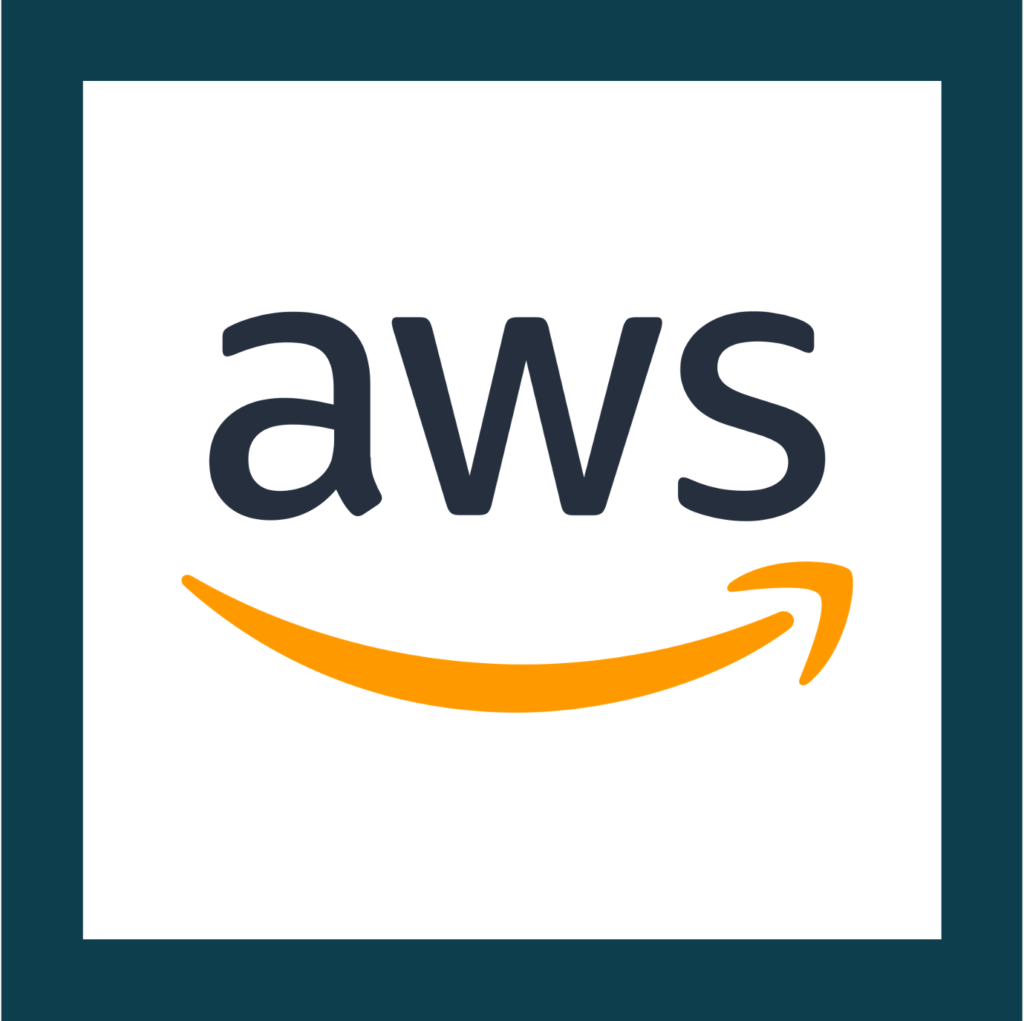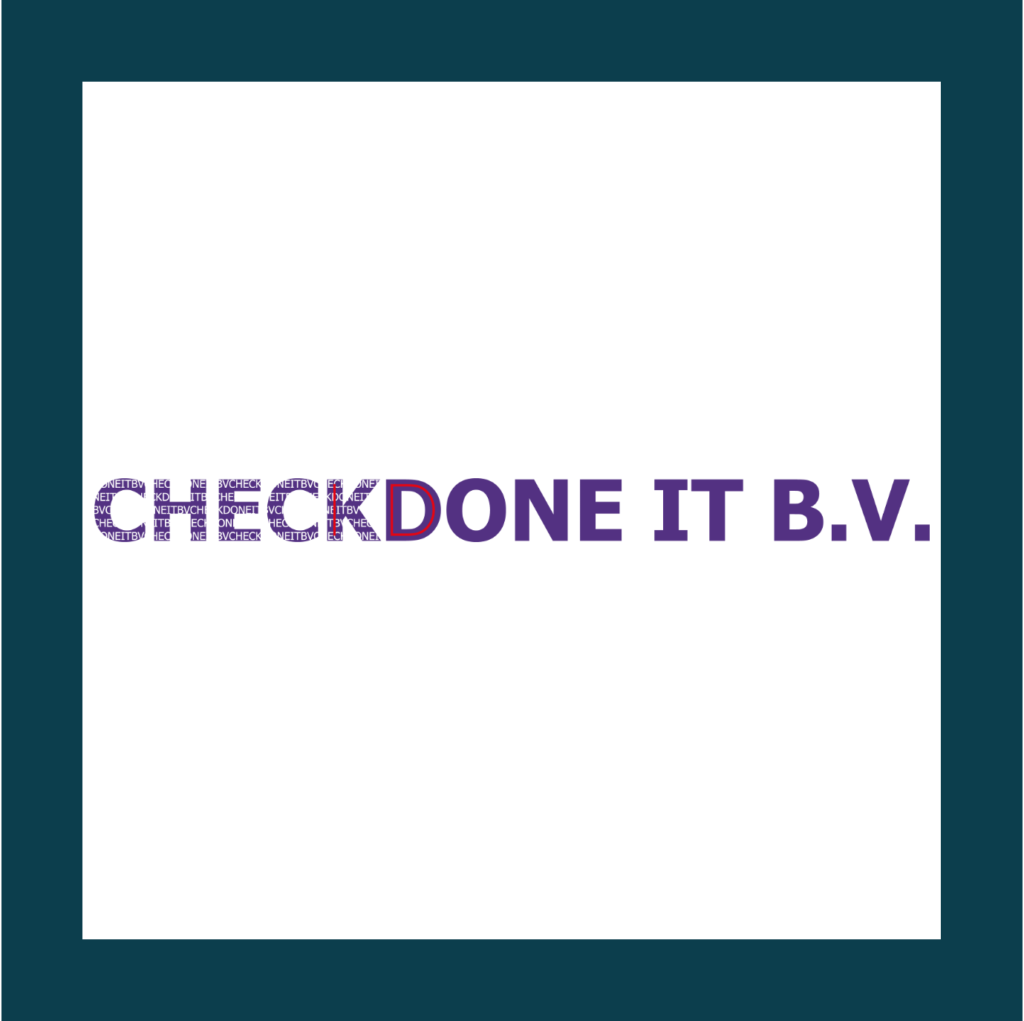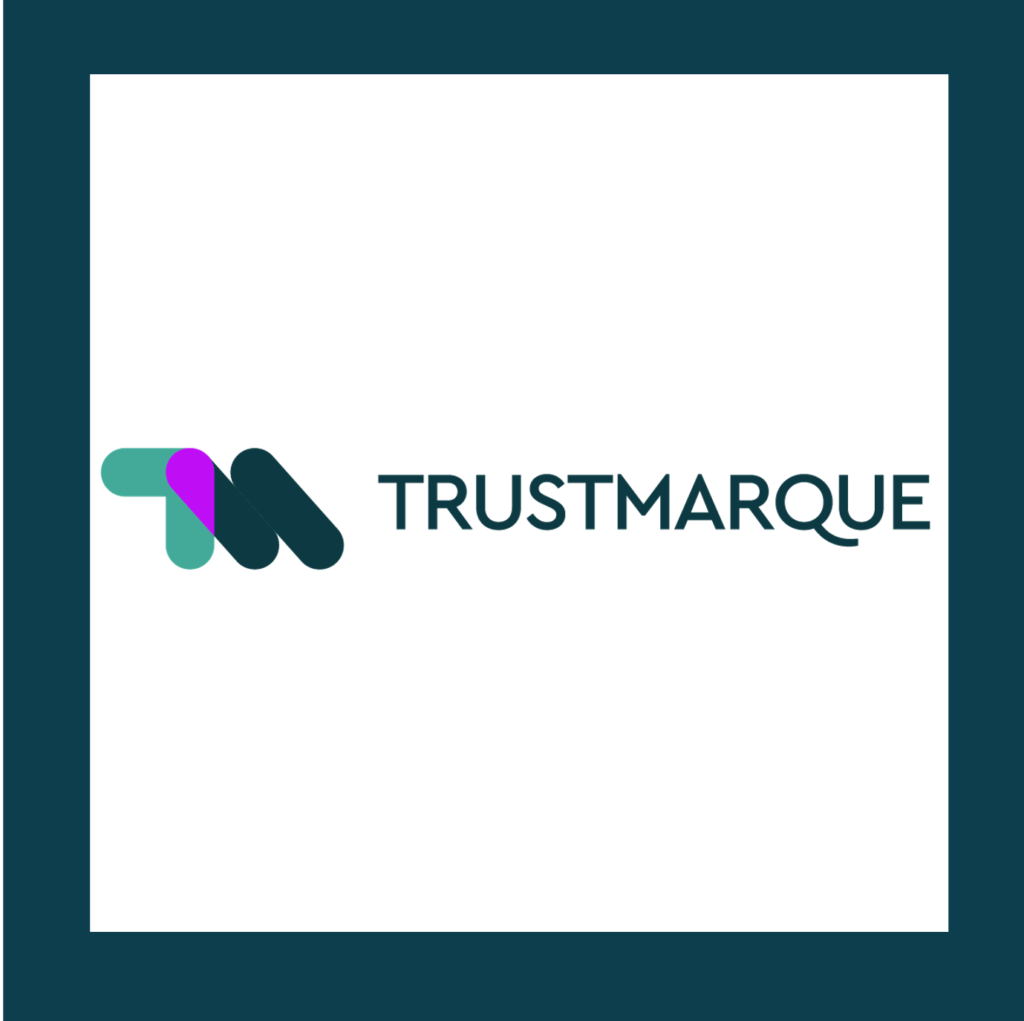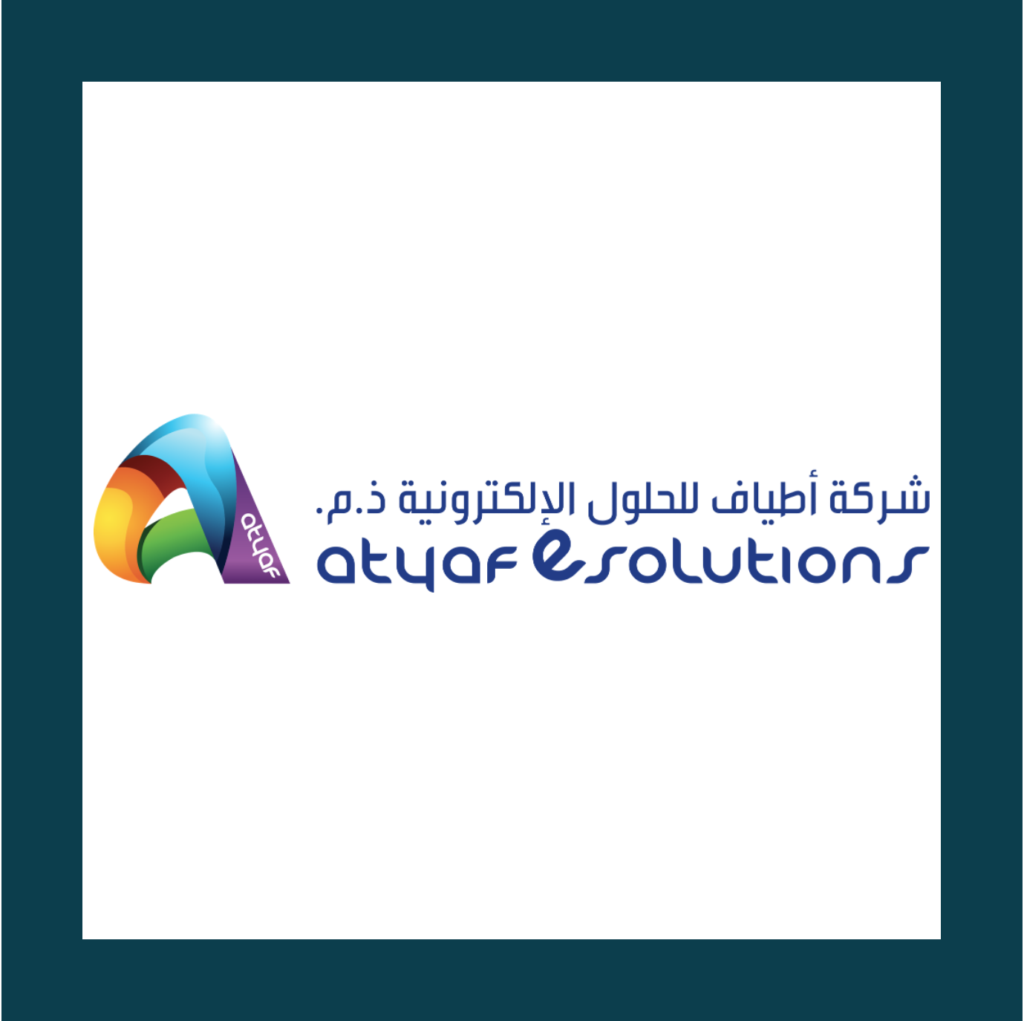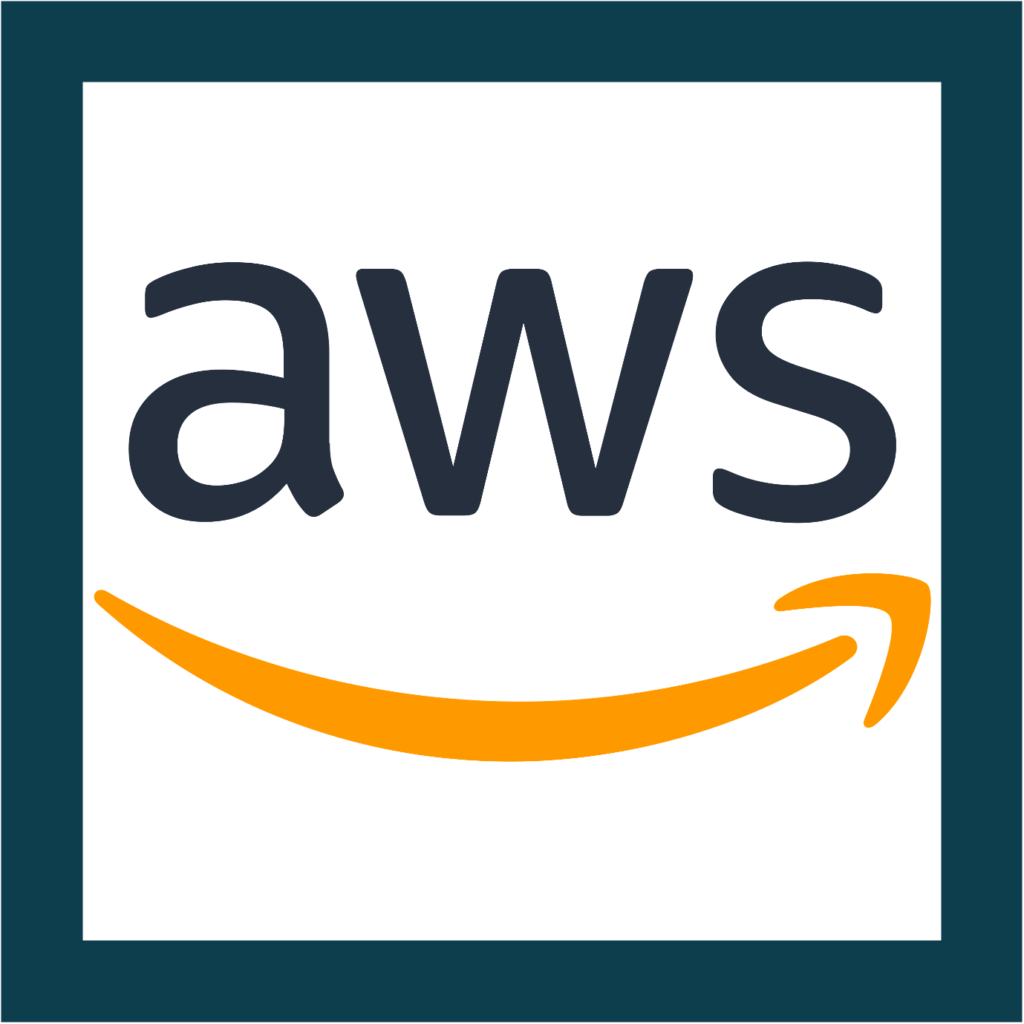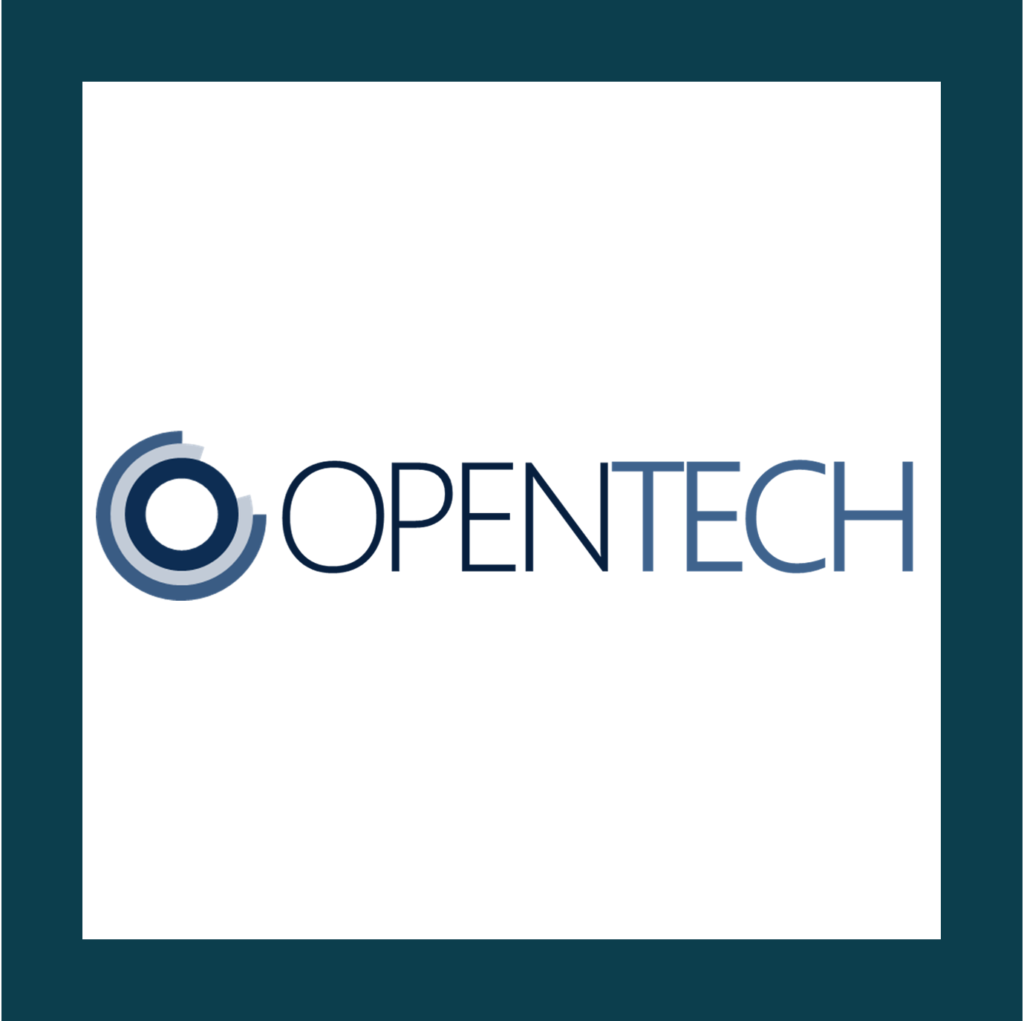Its well documented that Boards are now placing a greater focus on reviewing and analysing budget spend for cyber security teams. So, in order for CISO’s to effectively communicate the significance and value of implementing a technology such as Continuous Controls Monitoring (CCM), it’s imperative that they articulate this through a strategic lens rather than purely from a security perspective.
This will include presenting continuous controls monitoring as a vital component not only to the organisation’s security posture, but how ultimately, that presents business-wide protection, emphasising its proactive role in identifying and mitigating risks, ensuring continual compliance, and safeguarding the organisation against potential financial and reputational devastating impacts. Framing continuous controls monitoring as the adaptive, proactive answer to today’s organisational challenges, CISO’s can underscore its contribution to a more resilient and secure business operations – to obtain that Board-level support.
What’s changed? Why the shift for Boards to place the magnifying glass on IT technology spend?
Cost is a key driver: IT spend consumes a significant proportion of a company’s budget. More than ever in the current economy. Boards are keen to ensure that these expenditures are optimised and provide value for money. Analysing IT spend helps identify opportunities for cost reduction, efficiency improvements, and better resource allocation.
The strategic importance of IT: IT underpins the entire organisations operations and its infrastructure drives strategic objectives. Therefore, IT spend has to align with the overall business strategy.
Risk Management: It’s of no surprise that risk management is becoming increasingly more challenging – cyber security threats, data breaches to name but a few. Boards now analyse IT spend to assess the organisations readiness to mitigate and manage any threats they face, so investment in security and risk management tech must align to the overall objectives of protecting the business.
Governance, Risk and Compliance: Compliance is evolving at an alarming rate and its imperative organisations have robust procedures to ensure they are continuously compliant to their regulatory framework. Any IT tech spend must be able to demonstrate that it will support this initiative.
ROI is never more important: Boards want to know now that whatever investments are being made in IT, has been analysed and assessed on business performance, revenue growth and customer satisfaction and protection. This evaluation is integral for making informed decisions about IT tech investments.
The Digital Transformation: Companies continue to engage in digital transformation to remain competitive, so Boards need to understand how IT resources are being allocated to realise these goals. This allows organisations to remain innovative and agile for the future.
How can CISO’s articulate the value of Continuous Controls Monitoring to Board Executives?
Continuous Controls Monitoring, despite being a technology with a decade-long presence, is still in the early stages of adoption by businesses, with many organisations yet to fully grasp its potential and the benefits it can bring to their operations. Whilst knowledge around what CCM can do is certainly growing amongst CISO’s, at Board level you can expect little to be known about it.
So, when trying to deliver the value to Board, it can be easy to focus on the functionality of the platform: Continuous monitoring, cyber risk quantification, alignment to frameworks for compliance monitoring. But really that’s just for the cyber and risk teams to understand and benefit from. Take the message one step further and extrapolate the overall business value that CCM brings and the strategic advantages it provides for organisations.
The Top 8 Values of Continuous Controls Monitoring to demonstrate at Board Level
CISO’s need to be strategic in their thinking to secure their investments for CCM.
Our top 8 would be:
Time Savings: Continuous Controls Monitoring automates the monitoring process, reducing the time and effort required for manual control assessments. This leads to increased operational efficiency for teams to focus on more strategic tasks.
Cost Savings: Identifying control failures or anomalies early prevents financial losses due to errors, fraud, or non-compliance. As information is delivered in real-time, with the option of upstream ticketing to relevant teams, not only speeds remediation processes but means the likelihood of cyber-attacks and risks to be brought to significantly reduced.
Operational Resilience: Automation and monitoring of business processes reduces issues, and highlights areas in need of improvement and works to pull disparate teams together to enhance operations and reduce issues and risk.
Cyber Security as a system: CCM integrates every tool used for cyber defences into a single orchestration layer turning individual technologies into a single unified set of defences working together significantly increasing the effectiveness of each tool.
Compliance efficiency: CCM automates compliance requirements enabling continuous compliance against any regulation or set of KPIs. Meaning you can be assured your organisation is compliant with evidence-based reports.
Reputation Management: Avoiding financial scandals, fraud, or data breaches helps protect the organisation’s reputation. A positive reputation can attract customers and investors, indirectly impacting the ROI by fostering trust.
Enhanced decision making: The availability of real-time, accurate information improves decision-making. This can have a positive impact on strategic planning and resource allocation, contributing to the overall effectiveness of the team.
Board reporting: Highly accurate, fully automated and engaging visuals for consistent exec reporting showing trending and historical data to demonstrate the effectiveness of your investments in a way the board can understand!
In conclusion, the ability of a CISO to effectively convey the significance of Continuous Controls Monitoring to the board is pivotal in fostering a comprehensive understanding of its value. By approaching this communication through a strategic lens and positioning CCM as an integral element within the organisation’s cyber security framework, CISOs can illuminate its critical role. This strategic communication not only strengthens the organisation’s resilience but also positions CISOs to secure valuable board-level support for the ongoing success of secure business operations.
To find out more about our Continuous Controls Monitoring platform click here.

